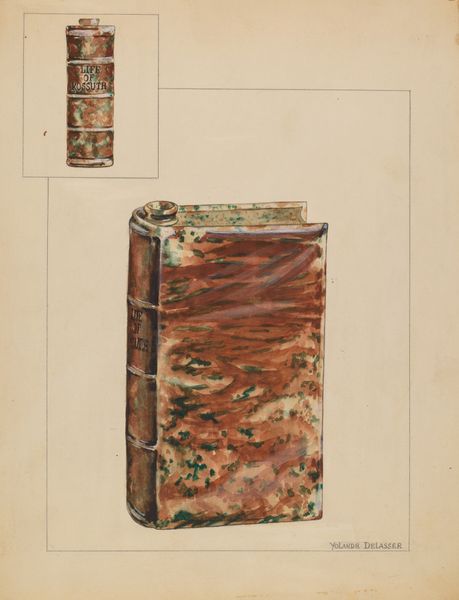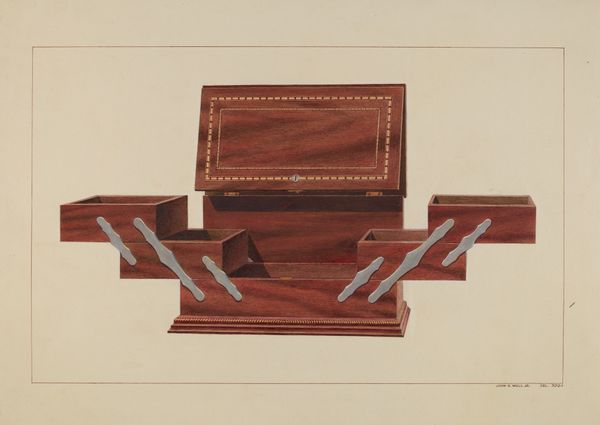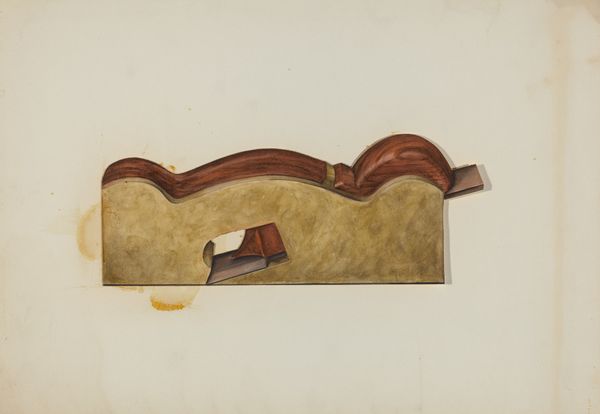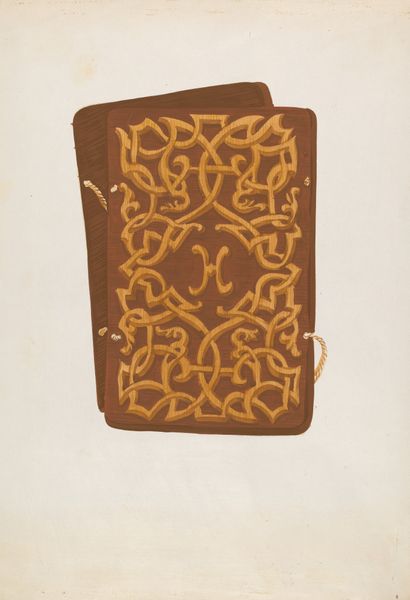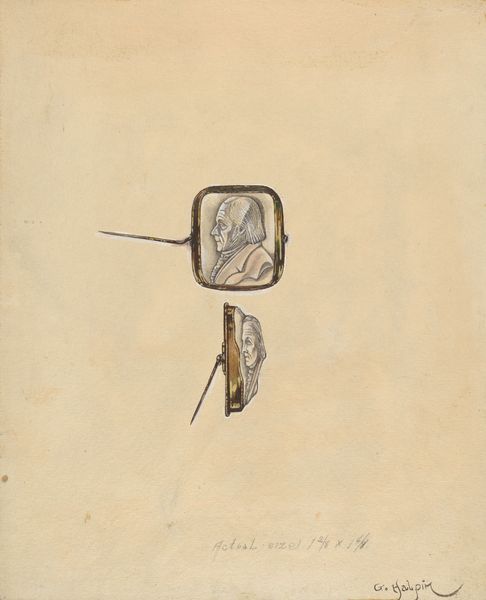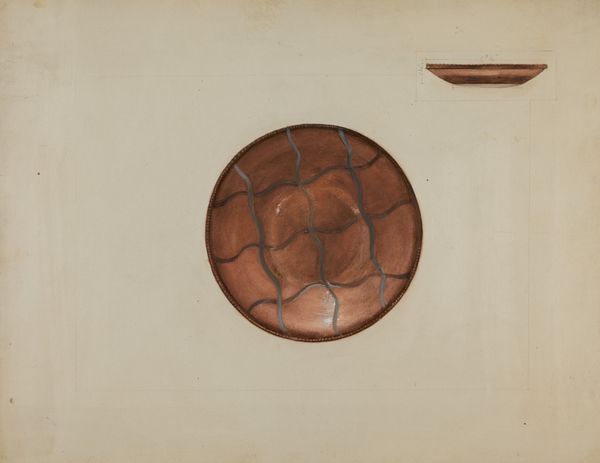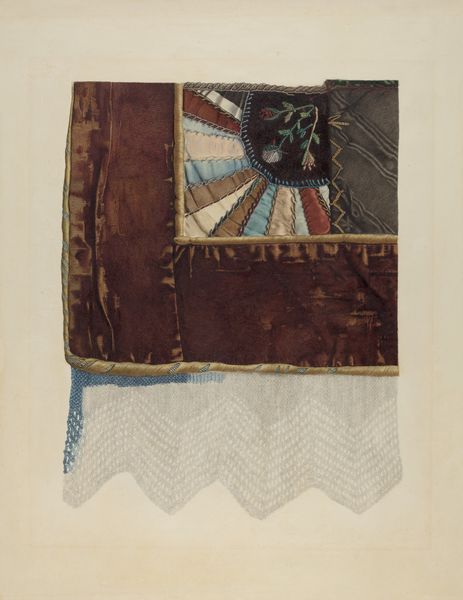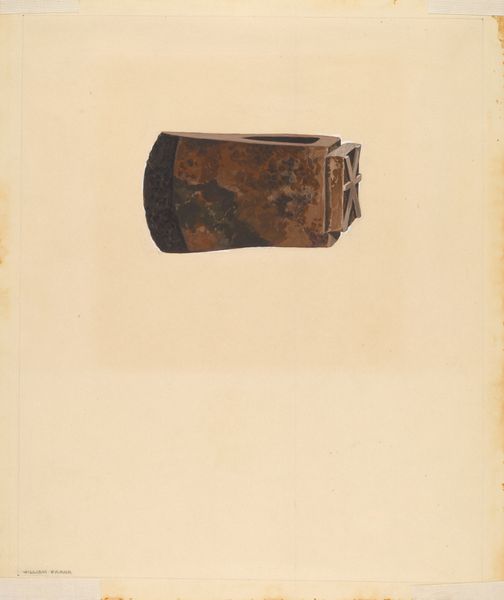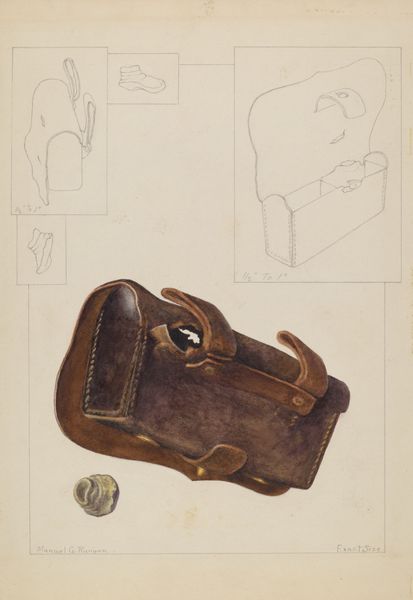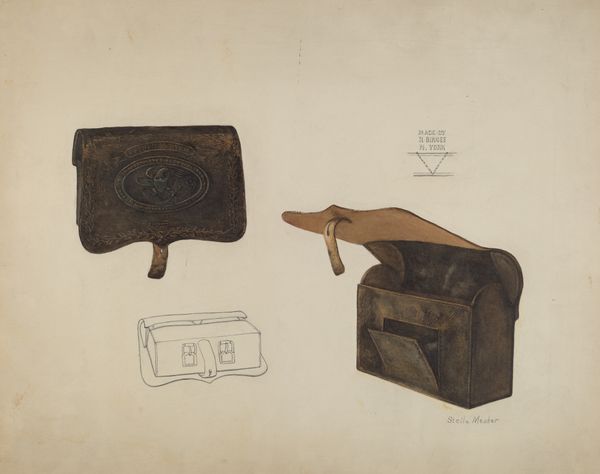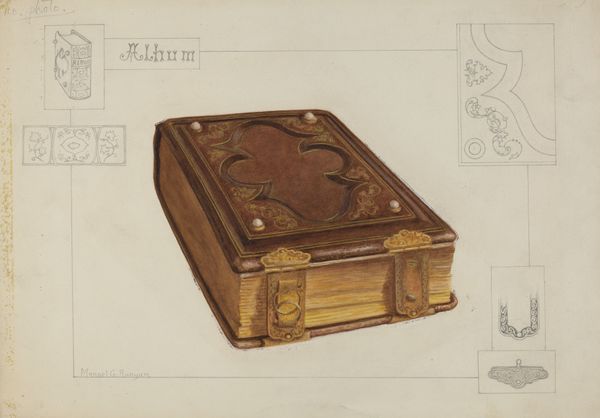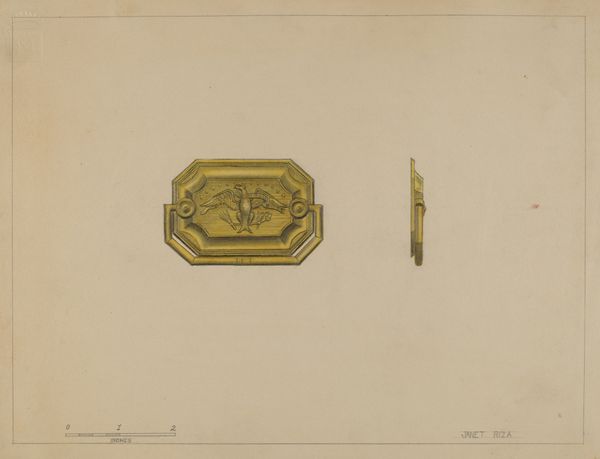
drawing, paper, watercolor
#
drawing
#
charcoal drawing
#
paper
#
watercolor
#
watercolour illustration
#
modernism
#
watercolor
Dimensions: overall: 22.9 x 30.3 cm (9 x 11 15/16 in.) Original IAD Object: 2 3/8" high; 4 1/4" wide
Copyright: National Gallery of Art: CC0 1.0
Curator: Allow me to introduce "Slip Cup," a watercolor and charcoal drawing on paper created around 1936 by Hedwig Emanuel. Editor: It's a very grounding palette, a spectrum of browns, but with this stark white background. It's simple, functional in a way. But those additions! They remind me of pre-colonial Mexican or even ancient Minoan artworks... are those relief carvings on all four sides? Curator: Exactly! And while we don’t have precise documentation of Emanuel's intent, it’s worth considering the historical context. It dates from the interwar period in Germany, a time marked by tremendous political upheaval and cultural ferment under rising national socialist ideology, ultimately culminating in genocide against a population in which many worked in or supported the arts. Editor: That resonates strongly, now you point it out. There's something so deliberate in what's depicted versus what isn't. This looks less like a functional blueprint for craftspeople and more like...a form of reclamation and remembering, of highlighting techniques and craftsmanship devalued by an emerging regime. I mean, just look at the relief fragments! Curator: Indeed. The very presence of the carved elements could suggest resistance or preservation of pre-industrial art and life. The inclusion of a cigarette—placed centrally with purpose—could hint at pleasure and resistance as a form of rebellion. Editor: Precisely! Art of quiet gestures as political statement, rather than aggressive opposition, for the self-sustained life in particular! Curator: It forces us to contemplate what's prioritized by dominant powers and to examine those who are affected by these very policies. To really look deeply at how artists of marginalized backgrounds have historically confronted this challenge. Editor: Absolutely, seeing how an artist navigates treacherous times is a testament to art's power, not merely as documentation but as a defiant statement. A way to honor cultural heritage under oppression. The artwork becomes an important conversation piece around this moment. Curator: Absolutely. “Slip Cup” offers much for contemporary reflection. Editor: It is a sobering yet evocative statement, beautifully understated.
Comments
No comments
Be the first to comment and join the conversation on the ultimate creative platform.
